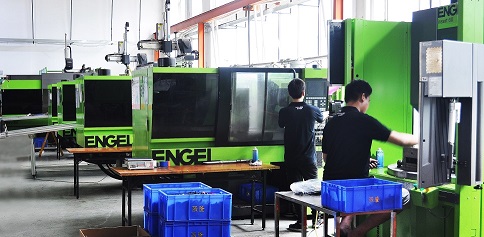
Injection molding is a widely used manufacturing process for producing high-quality, mass-produced plastic components. However, traditional injection molding is not always suitable for low-volume production needs. Low-volume injection molding emerges as an attractive alternative when only a limited quantity of parts is required. In this article, we will explore the benefits, applications, and considerations of low-volume injection molding, shedding light on how it has revolutionized the production of custom components for various industries.
Understanding Low-Volume Injection Molding
Low-volume injection molding, also known as soft volume production mold or injection molding low volume, caters to the niche market of custom, small-batch manufacturing. It is a cost-effective solution for producing prototypes, low-volume parts, and products with specific design requirements. The process follows the same principles as traditional injection molding but is tailored to meet the needs of low-volume production runs, typically ranging from a few hundred to a few thousand units.
Benefits of Low-Volume Injection Molding
Cost-Efficiency: Traditional injection molding involves high initial setup costs, making it uneconomical for small production runs. On the other hand, low volume injection molding significantly reduces tooling and setup expenses, making it an affordable option for custom manufacturing without sacrificing quality.
Injection molding low volume, a rapid production of prototypes and end-use parts
Faster Time-to-Market: With reduced tooling lead times, injection molding low volume allows for more rapid production of prototypes and end-use parts. This swift turnaround time is advantageous for companies needing to test and validate their designs before launching larger-scale shows.
Customization and Iteration: Low-volume injection molding is an ideal choice for companies seeking to develop highly customized products. It enables designers to iterate and refine their designs without committing to massive production quantities, saving time and resources.
High-Quality Output: Despite its lower production volumes, low-volume injection molding maintains the same precision and quality as traditional injection molding. This ensures that the finished parts meet the necessary standards and requirements.
Applications of Low-Volume Injection Molding
Medical and Healthcare: In the medical industry, where precision and customizability are paramount, low volume injection mold finds extensive use. It allows the production of medical devices, equipment components, and surgical tools tailored to specific patient needs.
Where precision and customizability are paramount, low volume injection mold finds extensive use.
Aerospace and Defense: The aerospace sector often requires unique and complex aircraft and defense systems components. Low-volume injection molding can cater to these demands, offering lightweight and durable parts at a fraction of the cost of traditional manufacturing methods.
Consumer Electronics: With ever-changing consumer demands, electronic companies often need to test and produce small batches of product variations. Low volume production mold accommodates this requirement and helps manufacturers stay competitive in the fast-paced consumer electronics market.
Automotive: Prototyping and producing customized interior components, dashboards, and trim pieces can be efficiently achieved through low-volume injection molding in the automotive industry. This process supports automobile manufacturers in staying ahead of design trends and consumer preferences.
Considerations for Low-Volume Injection Molding
Material Selection: Material choice is crucial in low-volume injection molding, as it affects the quality, durability, and functionality of the final product. Manufacturers must select the appropriate resin that suits the application and production volume.
Tooling and Design Optimization: To reap the full benefits of low-volume injection molding, designers and engineers should optimize the tooling design. Well-designed tooling ensures smooth production, reduces cycle times, and minimizes the risk of defects.
Testing and Validation: While low-volume injection molding allows for cost-effective prototyping, it is essential to thoroughly test and validate the parts before proceeding with large-scale production. Rigorous testing ensures that the products meet industry standards and customer expectations. Collaborating with an experienced and reputable manufacturer ensures that the entire process, from design to production, is smooth and efficient.
Conclusion
Low-volume injection molding has emerged as a game-changer in custom manufacturing. Its cost-effective nature, faster turnaround time, and ability to produce high-quality components make it a preferred choice for various industries, from medical and aerospace to consumer electronics and automotive. As technology advances, low-volume injection molding will likely continue to evolve, opening up new possibilities for innovation and customization in the manufacturing landscape.
For detailed information about Low volume production mold, click here Stebro Mold to explore the quality of plastic mold company in China.
























